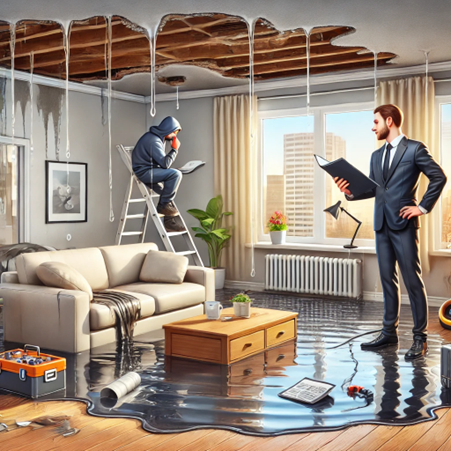New York is the city of glamour and glitz. Hence, it’s easy for anyone to get fascinated by its charm. However, residential apartments in this part of the US face unique challenges, including water damage. Unpredictable weather and old buildings can be held responsible for water damage. If the infrastructure is poor, apartments can suffer water destruction risks due to weak plumbing systems. However, the same trouble can occur during heavy rains or snowstorms, causing roof leaks. Even damaged seals on the doors and windows can be considered a problem. No matter what, water destruction can harm your property and contents.
If you try to restore property, you incur an expensive cost. To tackle this, you can file a water damage restoration insurance claim. Insurance claim processes are often tiring and demanding. However, you can do well by increasing your awareness about them.
Water Damage Claim Process
When you notice water damage, your first step should be to minimize its impact and get an insurance claim. Check the source that wreaked havoc in your dwelling. Protect yourself from structural issues and electrical hazards. In this situation, you need a reliable restoration services company that can restore your property after checking the extent of damage. Your contractor should have a good relationship with insurance companies. They operate in a way that the restoration work meets the insurance company’s requirements and makes claim approvals easy. Rely on them for claim submission with complete details about the source of water damage, extent, and mitigation efforts. Once the claim is filed, they can negotiate the best terms and conditions with the insurance policy providers.
Things to Consider about Water Damage Insurance Claims
If you have homeowners’ insurance, you will have many questions run through your head about damage claims. Fortunately, sudden and accidental water destruction are covered. But you can face a hard time in certain situations. Suppose water damage has been unleashed by sewer or groundwater backup. You can expect help if you have also bought sewer backup coverage. How to get insurance to pay for water damage and resulting mold growth? The cause of the event should be covered in the policy. Water destruction and mold issues caused by household appliances, heating and cooling systems, storm drains, or sewer pipes are often eligible for compensation.
Any standard homeowner’s insurance policy can compensate for the replacement cost for carpeting, appliances, awnings, personal belongings, etc. You may wonder if the policy would cover the cost of damaged structures. It depends. For example, your insurer can pay for hardwood flooring replacement if the damage is beyond repair.
Understand Policy Exclusions
Not all water damage incidents are covered by insurance. Most homeowner policies exclude damages caused by gradual leaks or long-term issues. Ensure you understand your policy’s exclusions, such as neglect or failure to maintain the property. For example, if a leaky pipe causes damage over time and you didn’t take steps to repair it, the claim could be denied. Always address potential risks proactively to avoid these pitfalls.
Keep Detailed Records
Document every stage of the damage and restoration process meticulously. Take photos, videos, and written records of the damage, including receipts for any repairs or mitigation efforts. This documentation is vital for substantiating your insurance claim and speeding up the process. Having thorough records shows the insurer that the damage was significant and supports the amount you’re claiming.
Stay Communicative with Your Insurer
Open, clear communication with your insurance company is crucial. Notify them as soon as the damage occurs, and keep them updated on any developments. Prompt and frequent communication can prevent delays in claim processing and demonstrate your commitment to resolving the issue.
For further information on handling insurance claims, refer to the guidelines provided by the National Association of Insurance Commissioners (NAIC), which offers additional tips on managing claims and understanding insurance coverage.
Conclusion
Nevertheless, insurance companies can reject or dispute your claim on various grounds, such as the source of water destruction, inadequate evidence, or late claim filing. It’s normal to panic in this scenario. But focus on resolving the issue. A local contractor that has a good rapport with insurance companies can be most reliable in these matters. They create claim documents highlighting all water damage remediation costs with proper photo and video proofs. These contractors are adept at dealing with insurance professionals. Hence, the chances of reaching a fair settlement are always high.

Recent Comments